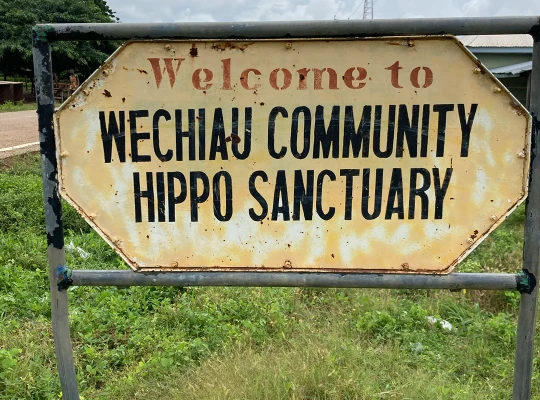The Controversial Emergency...
November 6, 2025

The Wechiau Hippo Sanctuary, established in 1999 along the Black Volta River in Ghana’s Upper West Region, stands out for its thriving hippopotamus population and the remarkable collaboration between local communities in preserving the area.
The sanctuary was born from the vision of the Wechiau Traditional Council, supported by local villages, to protect the hippo population and foster eco-tourism. Prior to its establishment, the hippos faced threats from farming and fishing activities. Recognizing the potential of eco-tourism to boost the local economy, community leaders designated a section of the river and surrounding lands as a protected area.
Stretching over 40 kilometers of the river and encompassing several villages, the sanctuary is managed by a board of local community members, traditional authorities, and conservation organizations. The Wechiau Hippo Sanctuary is a model of community-based conservation, where local residents actively participate in management and decision-making.
Beyond hippo protection, the sanctuary focuses on conserving diverse wildlife species and habitats, making it a biodiversity hotspot. The preservation efforts have safeguarded various species of birds, reptiles, and plants.
The Wechiau Hippo Sanctuary has become a major eco-tourism destination in Ghana, attracting tourists from near and far. Visitors can embark on guided canoe tours to see hippos in their natural habitat, explore the savannah and woodland, and visit traditional Lobi compound houses.
Tourism revenue supports local development projects, including education, healthcare, and infrastructure, reinforcing the link between conservation and community welfare and ensuring the sanctuary's sustainability.
Despite its successes, the sanctuary faces challenges such as poaching, human-wildlife conflict, and climate change. However, ongoing efforts by conservation groups, government agencies, and local communities aim to address these issues and protect the sanctuary’s unique ecosystem.
The Wechiau Hippo Sanctuary is a powerful example of community-driven conservation, showing how local communities can work together to protect their natural heritage while improving their livelihoods.
November 6, 2025
November 5, 2025
November 4, 2025
October 31, 2025
October 30, 2025
October 30, 2025
October 30, 2025
September 25, 2025
September 12, 2025
September 11, 2025